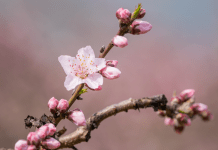Two weeks ago it was freeze warnings and now we are in the 80s. Welcome to spring in Phoenix! But that also means it is time to plant a spring garden! We have had a winter garden all this year and it has been life changing and I can’t wait to get our spring garden up and growing.
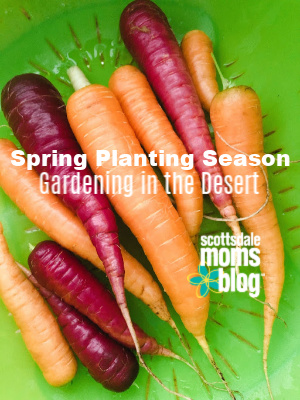 You would be surprised about how many different fruits and veggies you can grow here. I love growing things that the kids will eat, but what I love the most is growing all the lettuces. We have romaine, spinach, butter lettuce, red leaf, kale and baby greens. Everyday I head to the garden and pick enough leafs for our salads for lunch and dinner. It is fantastic. Also everything tastes so much better freshly picked right from the ground.
You would be surprised about how many different fruits and veggies you can grow here. I love growing things that the kids will eat, but what I love the most is growing all the lettuces. We have romaine, spinach, butter lettuce, red leaf, kale and baby greens. Everyday I head to the garden and pick enough leafs for our salads for lunch and dinner. It is fantastic. Also everything tastes so much better freshly picked right from the ground.
I can’t take all of the credit for growing a successful garden. I actually am really not that good with gardening, but I owe all of our success to Rebecca at Farmyard. Rebecca and her team helped us with every step of our winter garden from choosing the right spot to building planting boxes, to planting the winter plants and setting up the watering system. They are there to help as much or little as you need to grow a successful garden. I asked Rebecca some gardening in Arizona questions that I thought all of our readers would be interested in hearing the answers to from a professional.
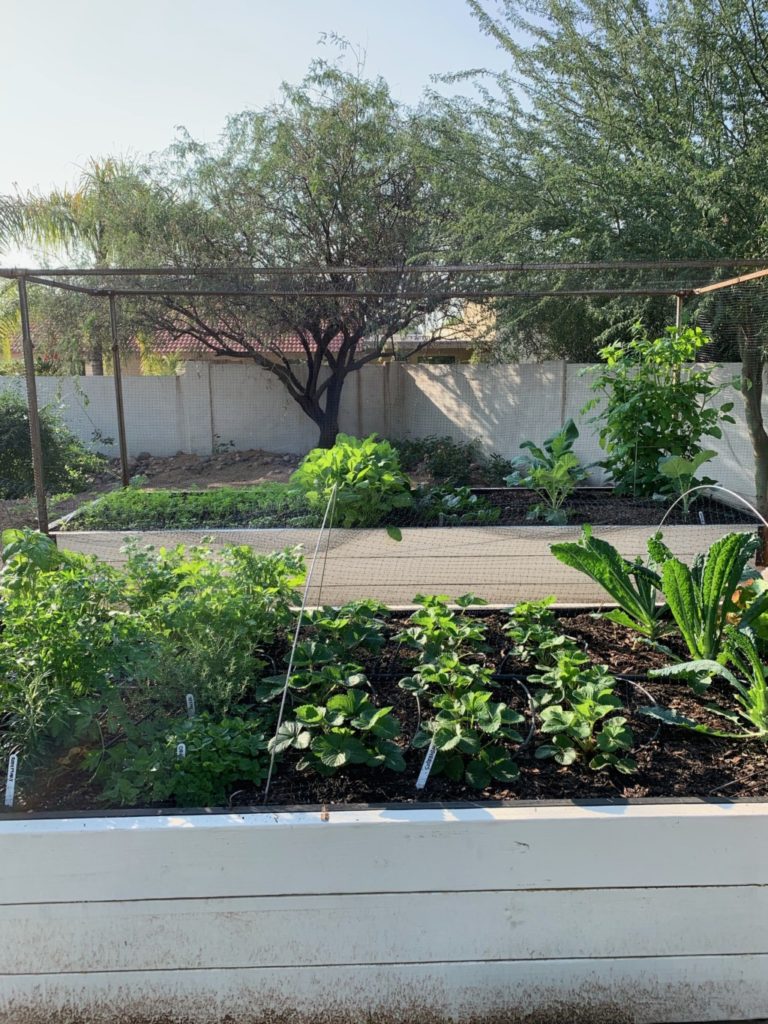
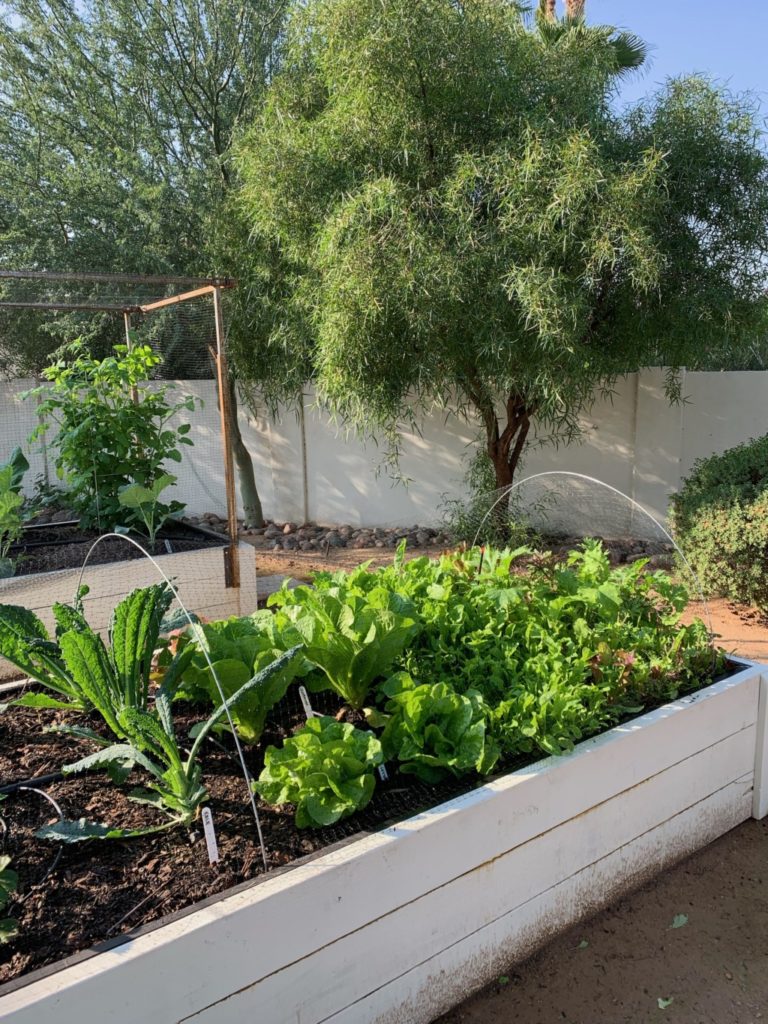
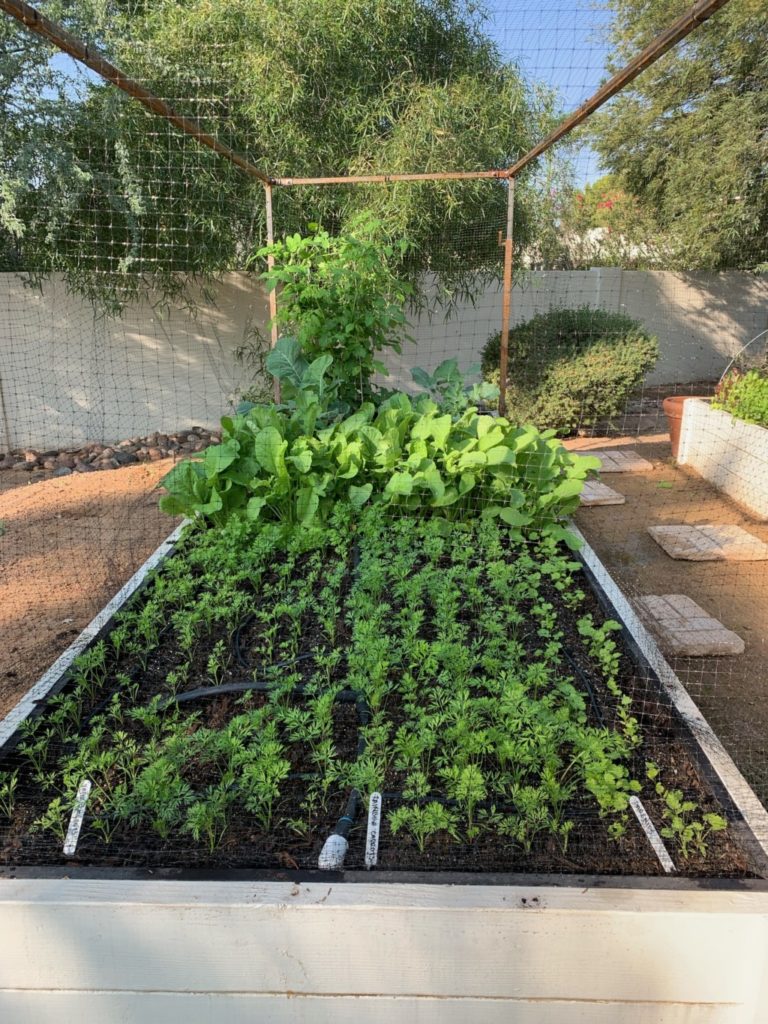
What is the biggest difference in growing vegetables and fruits in Phoenix versus other climates?
Timing. By far timing. Many of our clients come from the Midwest or back East and they are used to planting their spring garden in May. If you do that in AZ you will get not get the results, because if it’s not already 100 degrees it will be shortly. Only a handful of crops will tolerate those temperatures. Melons, winter squashes (butternut, acorn, spaghetti, pumpkins), basil and other herbs, peppers, eggplant, and sweet potatoes will thrive but not much else. Having a helping hand to say when it’s time to plant and what should be planted is HUGE. We keep our clients on track by sending out seasonally appropriate menus so they know what is available and a reminder that it’s time to get the garden ready for the upcoming season.
What is the biggest mistake you see home gardeners make?
Trying to grow in our native AZ soil. Our native soil, for the most part, is mainly clay and is also extremely alkaline. To improve the soil pH takes quite awhile. For the time, effort, and expense it takes to get AZ native soil at the appropriate tilth and pH, one could start with raised beds and have instant success with a bountiful harvest their first season. Yes, it does require a more substantial initial financial investment. Though when your return on that investment is measured in weeks vs. years, it makes the expense much easier to make when you are eating radishes at 30 days and your own salad greens at 45 days. All of our clients grow in raised garden beds whether they are ones we have built or that they have existing. We fill them with our compost that we make and they are off and running to their harvest.
How much time should the home gardener dedicate to maintain a healthy garden?
Our clients, on average, spend about 30-40 minutes a week or 5 minutes a day. With our system of raised garden beds with “ready to grow” soil, automated watering, and appropriate plant spacing – there is very little time necessary to achieve optimal results. Plants require adequate sunshine (we have plenty in AZ), water (it’s on timer for both what the plants need and is always drip irrigation to conserve water), and good soil (which we provide with the optimum nutrients and pH). So with these necessities taken care of, maintenance is really a breeze. It’s basically watching for bugs, treating when necessary (we assist our clients with pest detection and treatment methods) and harvesting, which is the BEST part of having a garden!
If you could only grow a couple of plants, which plants would you recommend for this spring planting season?
Tomatoes. Hands down. Most people have a memory of what their parents or grandparents fresh from the garden tomatoes taste like. Homegrown produce has a MAJOR difference in taste between what you can purchase even at the best grocer. The taste of a homegrown tomato is what prompts about 60% of our clientele to install a garden. It’s a common misconception that you can’t grow large beautifully sweet heirloom tomatoes in AZ. This absolutely dead wrong. We grow 20 varieties of tomatoes on our urban farms and in our clients gardens, and our largest has rung in at a whopping 1.89 pounds (that’s a BIG tomato). It was sweet, full of tomato flavor and was as big as a piece of toast for the perfect BLT. It was a variety called Striped German, and we named this whopper of a tomato “Helga” because a tomato like that needs a name!
Thank you to Rebecca at Farmyard for answering my questions and good luck to all of you with your backyard gardening projects. If you contact Farmyard, please let them know that Scottsdale Moms Blog sent you!
This post is NOT a sponsored post and we are just recommending Farmyard because we think it is a great local company to support (plus you get fresh fruit and veggies in your own backyard and nothing beats that).
You can also read about one of our contributor’s experience with growing a backyard garden in the desert (part 1, part 2 & part 3).





